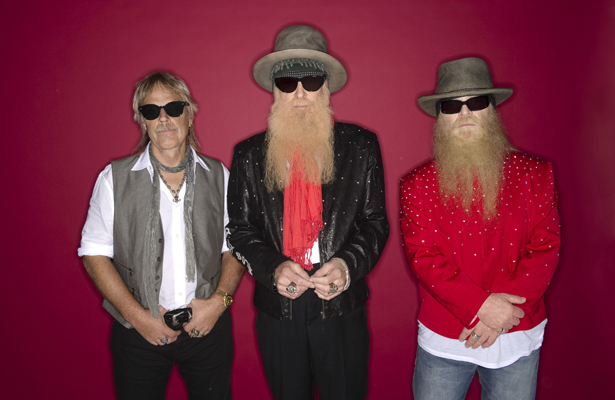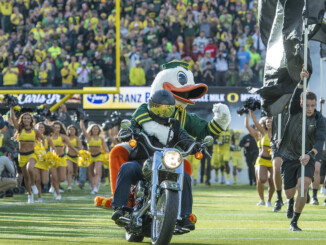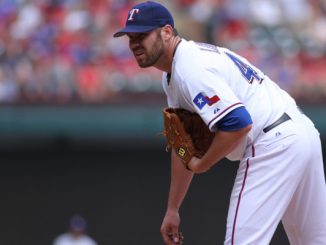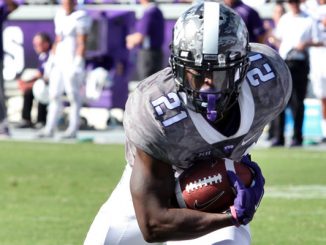
By Alan Sculley
Our favorite tres hombres from the Houston area are back on tour and will perform at Fair Park on Sept. 4. They’ve remained true to themselves since they started back in 1969. With 15 studio albums under their belt and closing in on half a century of creating new music, this has been no easy task for ZZ Top as frontman Billy Gibbons explains.
If there was one word that became meaningful during the extended time it took ZZ Top to complete its most recent album, La Futura, it was patience.
The project took several years to complete, and plenty of fans were eager to hear what the “Li’l Ol’ Band from Texas” had been up to in the studio by the time La Futura was released in September 2012 – a scant nine years after ZZ Top’s previous studio album, 2003’s Mescalero.
But singer/guitarist Gibbons was fully on board with the exacting standards of the album’s producer, Rick Rubin, which helped extend the wait for La Futura.
“I believe that it would be safe to say one of the most admirable traits that has endeared our band with Rick is his remarkable sense of patience,” Gibbons said in a recent interview. “Rick is in no way going to get set into motion where it may be hasty or hurried. He really is sincere when he works with any artist, of which there have been many. And he said ‘Let’s keep working on it until it’s right.’
“It’s funny, you may find yourself returning to a particular track, it may be months tucked away in the can, and you say ‘Oh yeah, I remember that. Let’s come back to that.’ So I really think Rick is one of the rare individuals who is willing to let the material develop and reach a logical zenith.
“That’s what I like and it’s also what a lot of people find kind of aggravating. (Bands say) ‘Gee whiz, we’ve already finished this.’ And he says well, ‘Maybe.’ Then you stop and think about it for a second, and you say maybe is the word. So with that in mind, I enjoy the process and I particularly, I just treasure the moments that Rick and I get to hang out together. We’ve been pals for 25 years.”
As Gibbons sees it, Rubin’s approach is for the artist’s own good.
“He’s providing a really great service to the artist,” said Gibbons, who will release his first-ever solo album, Perfectamundo, on Oct. 23. “It is tempting to want to rush right out and show the world what you’ve got. But it’s also a great value to have another opinion in the mix.”
The process of making the new album began in 2008, when Rubin, engineer Dave Sardy and the band went into the studio for some initial recording.
“We assembled about 20 rough song ideas from those sessions,” Gibbons said. “We (the band) pulled stakes to hit the touring trail, and I was able to drag those rough ideas along as we made our way through Europe. When I returned, I met Rick in Santa Monica (Calif.), and we were enjoying an evening walk down on the Santa Monica Pier, and he encouraged me to take the rough ideas and reassemble the band and he wanted me to go ahead and produce whatever we could sift out of the original song ideas.”
So Gibbons took the band (which also includes bassist Dusty Hill and drummer Frank Beard) into the studio and produced another session in which the song ideas were developed further and recorded with ZZ Top’s long-time engineering team of Joe Hardy and G.L. Moon.
Gibbons said the task of narrowing the selection of songs and refining the winners was a demanding and very detail-oriented process.
“The scariest part is when you completely tear a song down and are nearly starting it over,” Gibbons said. “We had done some rewriting. A lot of the lyrics were massaged into place. Even some of the guitar tracks enjoyed getting a chance to try a different direction. So it’s been a real labor of love with, and I like that word, a dedicated focus.
“It can be challenging to sit and listen to a song, the same song, for two hours and then you say ‘Gee whiz, let me sing that top to bottom. I want to go sing it again.’ Then you do that and then you say ‘Gee whiz, would this word be better here? Let me sing it again.’ After a full day, you’re just toast.”
The time that went into La Futura may have tested the patience of ZZ Top fans – as well as the band itself. But the effort was worth it.
It is one of the band’s strongest albums, with a raw and gritty guitar sound that recalls ZZ Top’s earliest albums, such as 1973’s Tres Hombres (which featured the boogying hit “La Grange”), 1975’s Fandango (which included another early hit, “Tush”) and 1976’s Tejas.
The group enjoyed considerable success through the 1970s, but hit even greater heights after retooling its sound on 1983’s Eliminator. That album saw the group blending synthesizer and other poppier modern sounds with its patented blues-rock sound, and singles like “Legs,” “Sharp Dressed Man” and “Gimme All Your Lovin’” (with the sly and sexy videos that accompanied those songs) turned ZZ Top into one of the world’s biggest bands.
The next two albums, 1985’s Afterburner and 1990’s Recycler further explored that slicker sound and continuing the band’s run of radio hits and multi-million album sales.
After that, though, ZZ Top began returning to its rougher, guitar-based sound on the 1994 album Antenna, and La Futura represents the most stripped down, back-to-basics effort from the band in more than 30 years.
With Gibbons’ guitar putting a sting into the sound and Beard’s rock-solid drumming powering the songs, the band features several first-rate Texas rocking boogie gems, including “I Gotsta Get Paid,” “Lose Lose You” and “Chartreuse,” which even uses a slightly rejiggered version of the signature riff from “Tush.”
Gibbons hinted that ZZ Top may return in far less than nine years with another studio album because the band left behind a good number of songs during the La Futura sessions that, with some fine tuning, could form the basis of a new album.
“We’re still looking at a lot of the material that remains unreleased that was created during those sessions with Rick,” he said. “Who knows, there’s a lot of good stuff laying around.”
In the meantime, fans also have a recent greatest hits package to check out called The Baddest of ZZ Top. The collection was released to coincide with a planned co-headlining tour last summer with Jeff Beck. But several dates into the outing, ZZ Top had to cancel the remaining tour dates – and a fall run of headlining shows – when Hill had health problems.
The greatest hits set comes in single disc and two-disc versions, and spans the career of ZZ Top through Mescalero. Gibbons had wanted to also include material from La Futura, but circumstances prevented that from happening. This necessitated a change of plans with the set’s title.
“It was initially to be referred to as The Complete Collection, Gibbons said. “However, I got behind and was unable to compare notes with Rick Rubin (producer of La Futura) and the (greatest hits) project was forging ahead. And I said ‘Well, it’s really not complete without the La Futura session.’”




